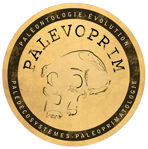A histological study of the lingual molariform teeth in Hyperopisus bebe (Mormyridae; Osteoglossomorpha)
Étude histologique des dents molariformes linguales de Hyperopisus bebe (Mormyridae ; Osteoglossomorpha).
Résumé
The molariform teeth of the mormyrid fish Hyperopisus bebe display a cone of orthodentine overlaid at their tip by a thick layer of enameloid (= acrodine). The teeth are fixed on a cellular bony tissue. This organization is classical for an actinopterygian and fits with the pattern classically observed in other osteoglossiform fishes. The presence of plicidentine and the hyoid tooth and tooth-plate morphology of this species may be related with crushing feeding habits.
Les dents molariformes du mormyridé Hyperopisus bebe ont une organisation histologique classique : un cône d’orthodentine coiffé d’une épaisse couche d’émailloïde (= acrodine). Les dents sont fixées sur une base d’os cellulaire, ce qui est en accord avec la position phylogénétique de cette espèce parmi les Ostéoglossiformes. La présence de plicidentine ainsi que la morphologie de la plaque linguale et de ses dents peuvent être liées au régime durophage de l’espèce.

